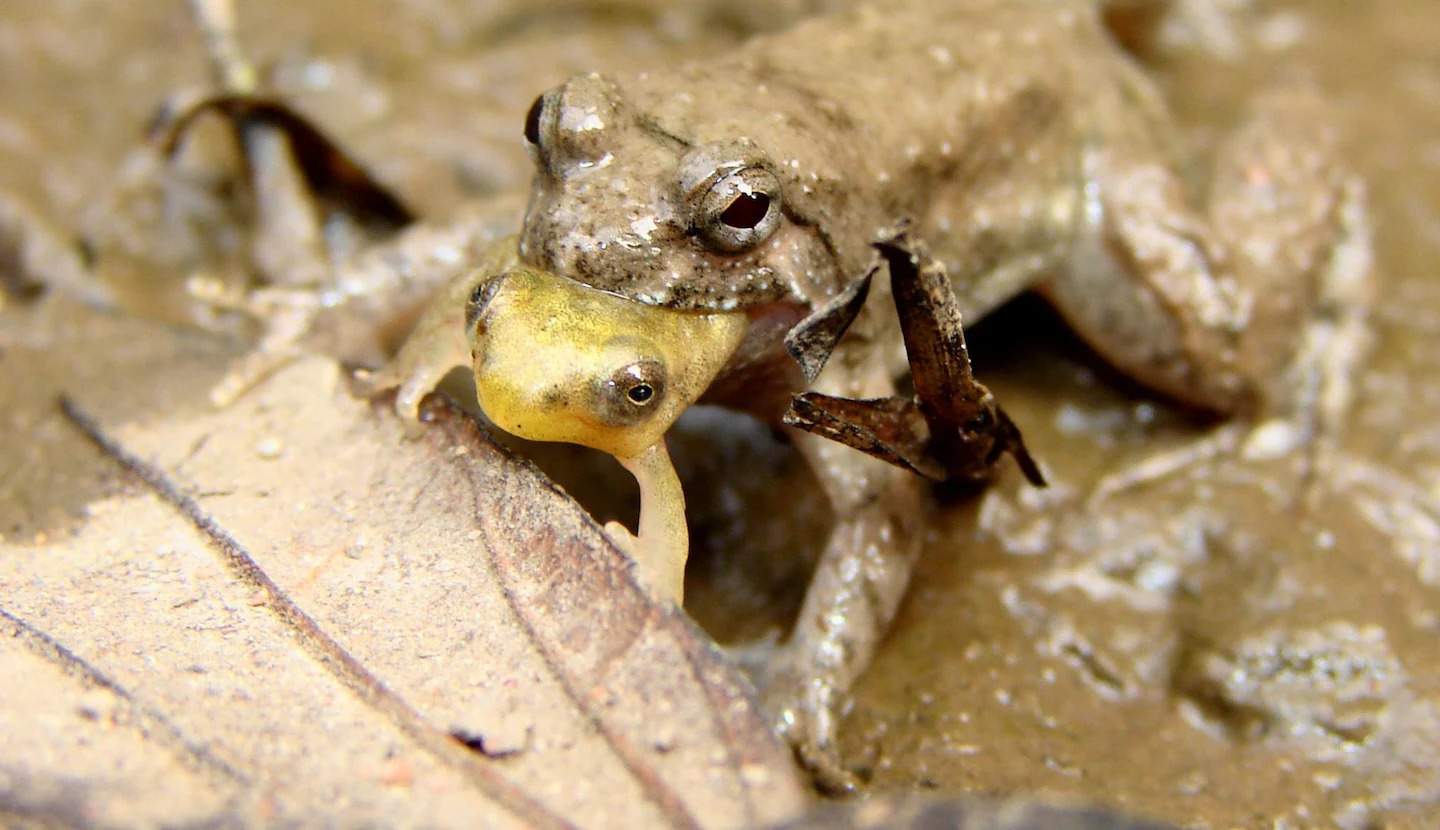
Ever wondered about the dark and mysterious world of cannibalism? Well, you're in for a treat, but not the kind you're thinking! Cannibalism, a topic as old as humanity itself, has fascinated and horrified people for centuries. From survival strategies in extreme conditions to ritualistic practices in ancient cultures, the reasons behind cannibalism are as varied as they are shocking. Cannibal facts are not just about the act itself but also about understanding human nature in its most primal form. So, why do humans turn to such extreme measures? Is it always about survival, or is there more to the story? Let's sink our teeth into the 31 best cannibal facts and uncover the truth behind this taboo subject. Ready to get a little uncomfortable and a lot intrigued? Let's dive in!
What is Cannibalism?
Cannibalism is the act of one individual of a species consuming all or part of another individual of the same species as food. While it might sound like something out of a horror movie, cannibalism exists in the animal kingdom and, albeit rarely, among humans for various reasons, ranging from survival to ritualistic practices.
Historical Instances of Cannibalism
- Cannibalism has been documented throughout human history, with one of the earliest recorded instances being the Gough’s Cave in England, where human bones from approximately 15,000 years ago showed signs of cannibalistic practices.
- In the 16th century, the Wari’ people of Brazil practiced endocannibalism, consuming the flesh of deceased community members as a form of mourning and respect.
- The infamous Donner Party, pioneers who became stranded in the Sierra Nevada mountains during the winter of 1846-1847, resorted to cannibalism for survival.
Cannibalism in the Animal Kingdom
- Cannibalism is quite common in the animal kingdom, with species like the praying mantis and black widow spiders being well-known for their cannibalistic mating behaviors.
- Sharks, especially sand tiger sharks, practice intrauterine cannibalism, where the largest embryo eats its siblings in the womb.
- Some species of hamsters, pigs, and chickens will consume their own offspring if they're stressed or if the offspring are perceived as weak.
Cultural and Ritualistic Cannibalism
- In certain cultures, cannibalism was performed as a ritualistic act, believed to transfer the strength or spirit of the consumed to the eater.
- The Fore people of Papua New Guinea practiced transumption, a form of cannibalism, until the late 20th century, which led to the spread of the fatal prion disease kuru.
- Human mummies were ground into powders and consumed as medicine in Europe during the Renaissance, a practice known as "corpse medicine."
Cannibalism for Survival
- Throughout history, there have been numerous accounts of cannibalism for survival. Sailors lost at sea, explorers in uncharted territories, and victims of sieges and famines have resorted to consuming human flesh.
- The case of the Uruguayan Air Force Flight 571, which crashed in the Andes in 1972, is a well-documented instance where survivors ate the deceased to stay alive.
Cannibalism in Mythology and Folklore
- Many cultures have myths and folklore featuring cannibalistic giants or monsters, such as the Wendigo in Algonquian folklore, which is said to embody both the act of cannibalism and the insatiable greed that leads to it.
- The Greek myth of Thyestes, who was tricked into eating his own sons, is another example of cannibalism in ancient stories.
Cannibalism in Modern Media
- Cannibalism has been a recurring theme in literature and film, often used to explore themes of survival, horror, or the breakdown of societal norms.
- Movies like "The Silence of the Lambs" and books like "Hannibal" by Thomas Harris have brought cannibalism into the realm of popular culture, albeit in a fictionalized form.
Legal and Ethical Considerations
- Cannibalism is illegal in most countries, though the act itself is not explicitly mentioned in the law; rather, it is often prosecuted under laws against murder, desecration of corpses, or assault.
- Ethical debates around cannibalism often arise in discussions of survival situations, with questions about the morality of consuming the dead to save the living.
Cannibalism in Science and Medicine
- In medical science, the transplantation of human organs and tissues can be seen as a form of cannibalism, though it is, of course, conducted for life-saving purposes and with consent.
- Research into prion diseases like kuru has provided valuable insights into neurodegenerative diseases and the risks associated with consuming human neural tissue.
The Future of Cannibalism
- With advances in lab-grown meats and other synthetic food technologies, some speculate about the ethical implications of creating human flesh for consumption without the need for death or harm.
- As global populations and food scarcity issues increase, discussions about the most extreme forms of survival, including cannibalism, become more relevant, though still largely taboo.
Cannibalism in Art and Symbolism
- Throughout history, artists have used cannibalism as a powerful symbol to critique societal issues, such as greed, war, and the dehumanization of individuals.
- In contemporary art, cannibalism can symbolize the consumption of one's culture or identity in the face of globalization and homogenization.
Psychological Aspects of Cannibalism
- Psychologists study the motivations behind cannibalistic behavior, distinguishing between survival cannibalism and pathological cannibalism, which is often linked to mental illness or extreme fetishism.
- The taboo and horror associated with cannibalism are believed to stem from a deep-seated human instinct to preserve the sanctity of the body and the community.
Cannibalism and Climate Change
- Climate change could potentially increase instances of cannibalism in the animal kingdom as resources become scarcer and species are forced into closer quarters or new territories.
- For humans, while the direct impact of climate change on cannibalistic practices is less clear, the resulting food scarcities and conflicts could theoretically lead to more situations where cannibalism is considered a means of survival.
Unusual Cases of Cannibalism
- There have been rare instances of self-cannibalism, known as autophagy, where individuals consume parts of their own bodies, often as a result of mental illness or extreme starvation.
- In modern times, there have been isolated cases of consensual cannibalism, where individuals have agreed to be consumed or to consume parts of another person, leading to legal and ethical dilemmas.
Cannibalism in Education and Research
- Cannibalism is studied in various academic fields, including anthropology, psychology, and biology, to understand its historical, cultural, and biological aspects.
- Educational discussions about cannibalism can challenge students to think critically about ethical issues, human behavior, and the diversity of cultural practices around the world.
A Final Bite on Cannibalism Facts
We've chewed through some jaw-dropping facts about cannibalism, from its ancient rituals to modern-day myths. Cannibalism, a topic as old as humanity, spans across cultures and continents, revealing both dark and fascinating aspects of human history. Whether driven by necessity, ritual, or psychological compulsion, the act of consuming human flesh highlights complex social, ethical, and survival issues. Remember, while these facts might be intriguing, they also remind us of the diverse and sometimes disturbing paths human behavior can take. So, next time you're sharing fun facts at a dinner party, consider dropping a few of these to really spice up the conversation. Just maybe, save them for after dinner.
Was this page helpful?
Our commitment to delivering trustworthy and engaging content is at the heart of what we do. Each fact on our site is contributed by real users like you, bringing a wealth of diverse insights and information. To ensure the highest standards of accuracy and reliability, our dedicated editors meticulously review each submission. This process guarantees that the facts we share are not only fascinating but also credible. Trust in our commitment to quality and authenticity as you explore and learn with us.


